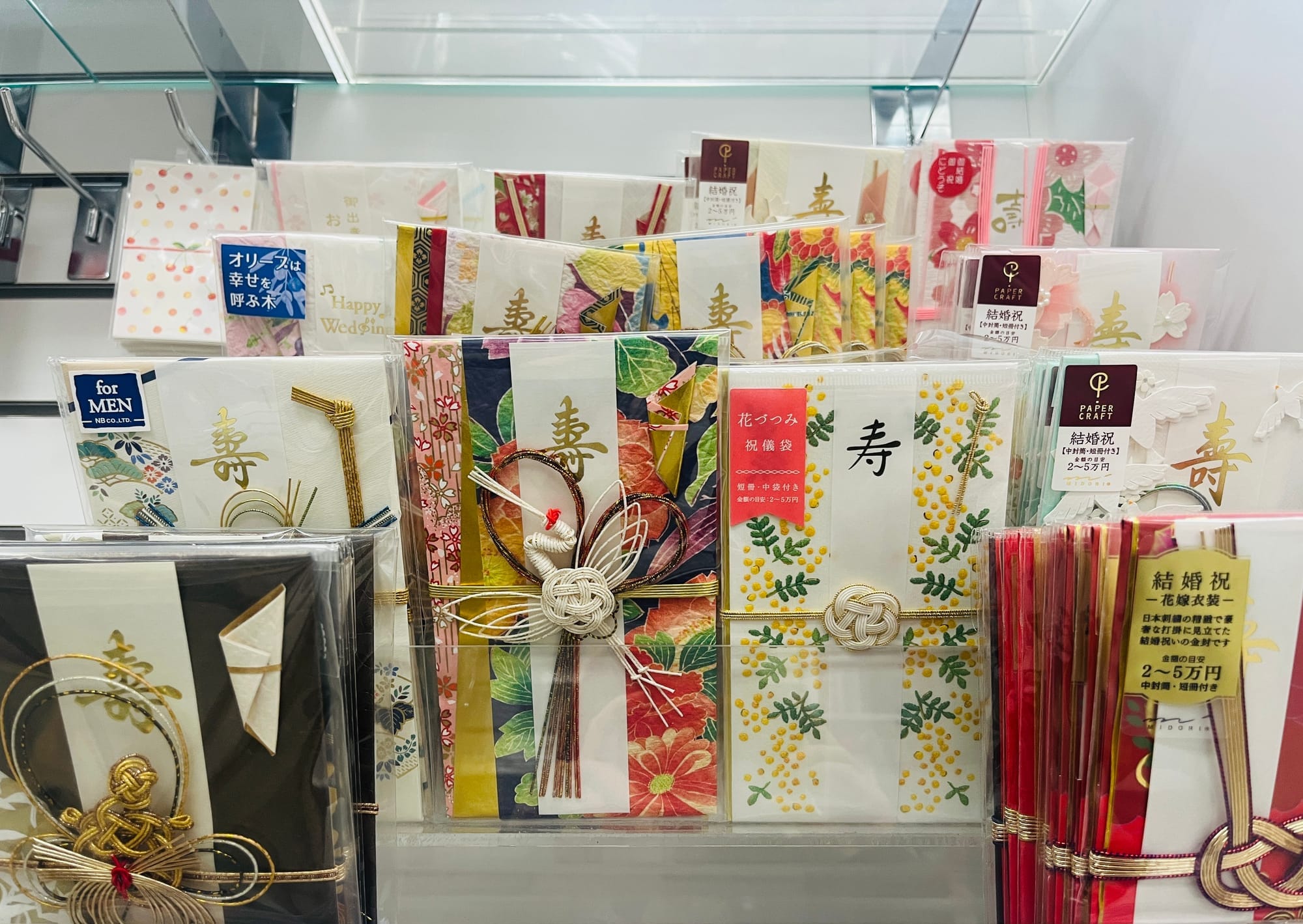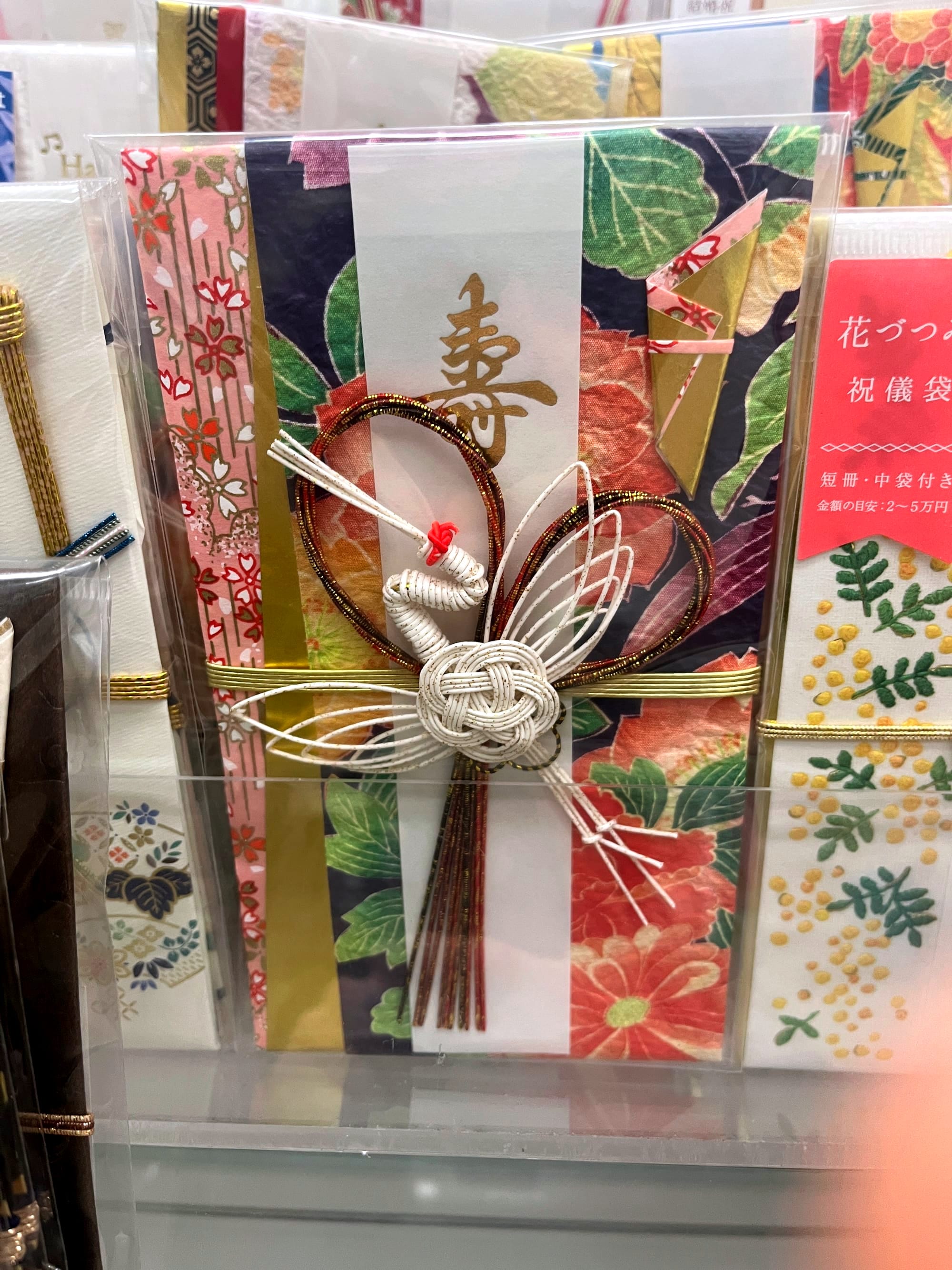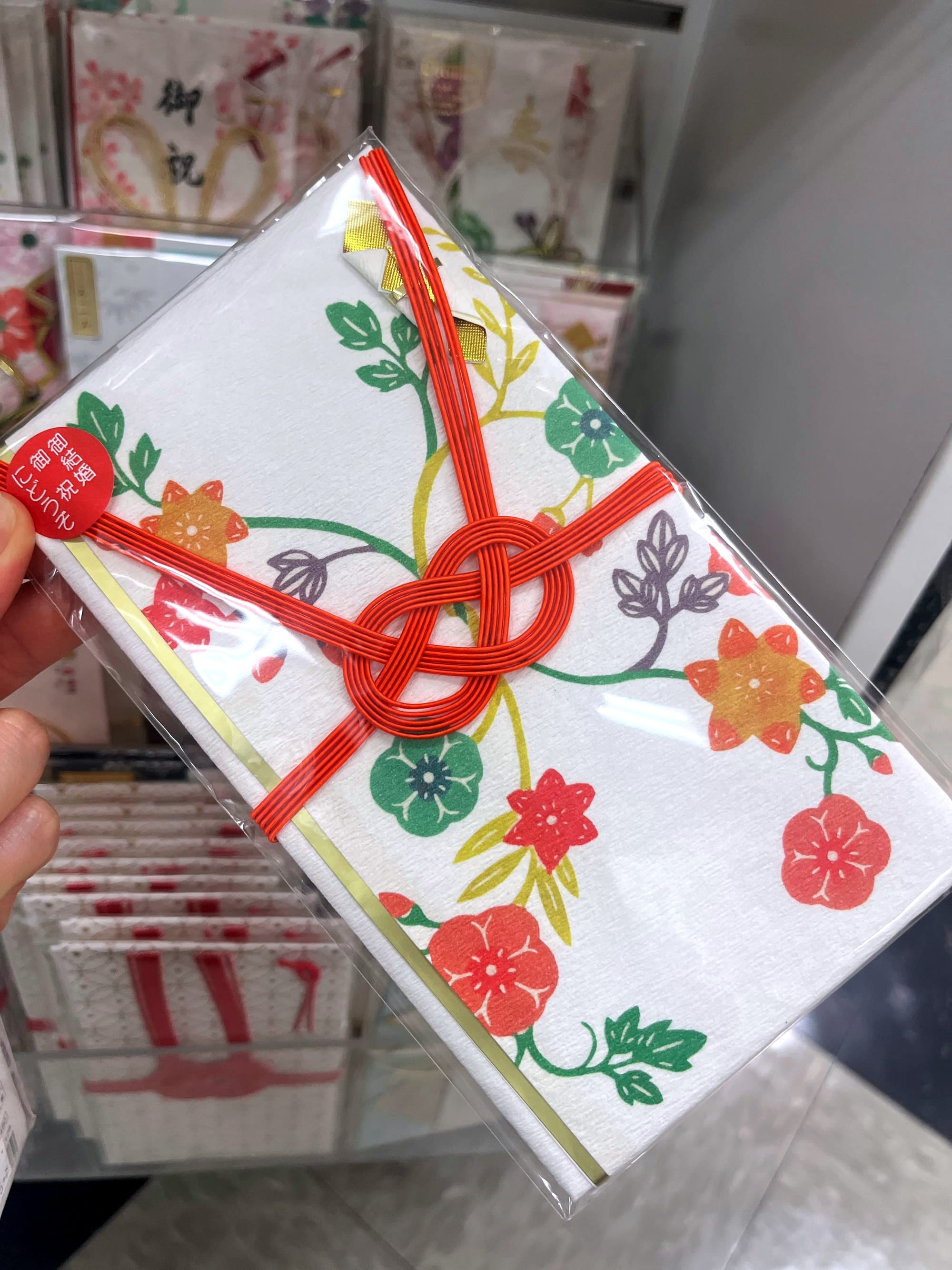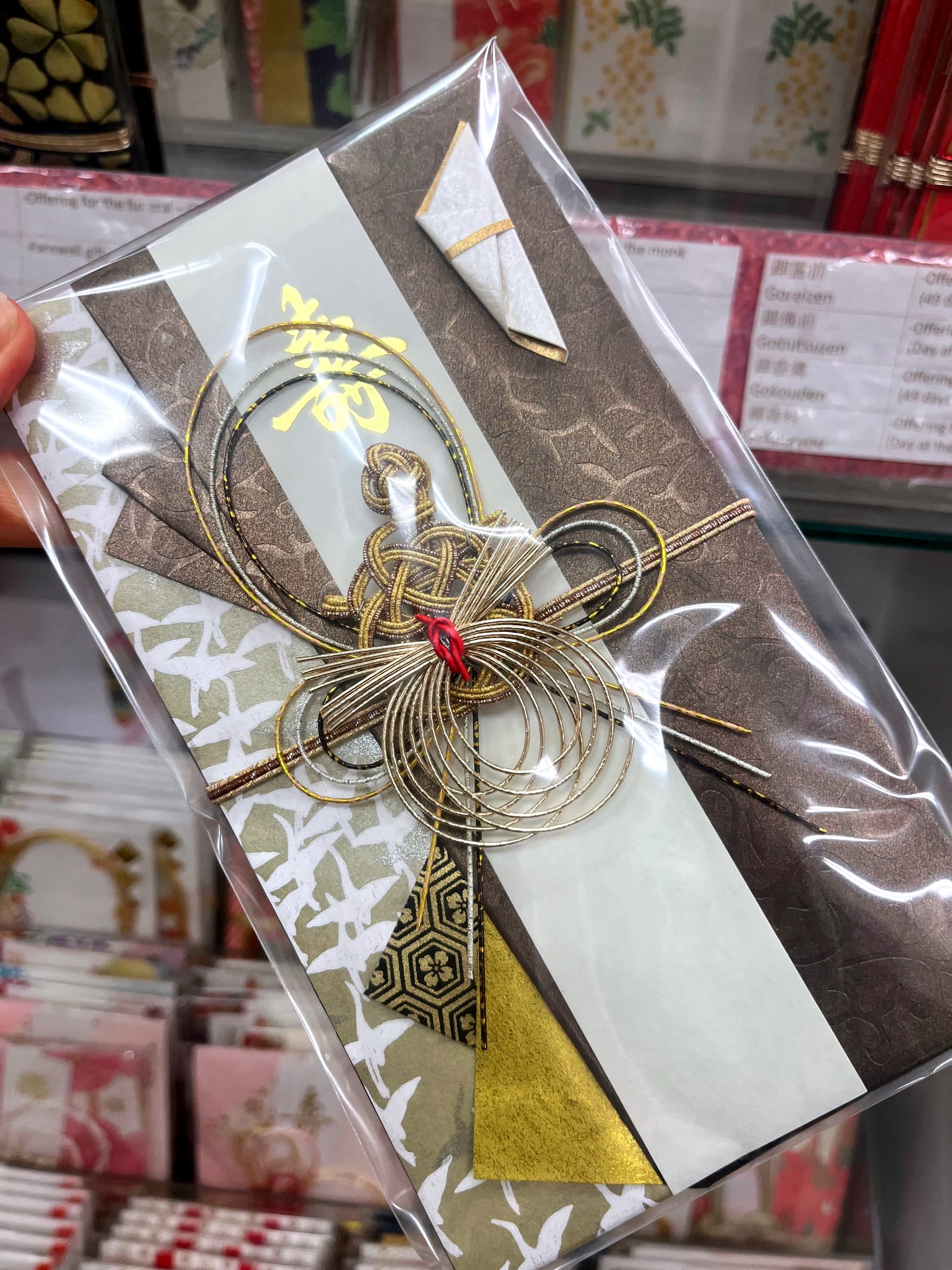The Thoughtful Beauty of Mizuhiki
I went searching for a special envelope for an upcoming wedding—and ended up falling down the beautiful, thoughtful world of mizuhiki.

Have you ever heard of mizuhiki?
In Japan, mizuhiki is a decorative cord used to tie special envelopes and gift wrappings for celebratory occasions—or sometimes for more somber ones, too.
I’m going to attend a wedding soon, so I went hunting for a beautiful wedding envelope with mizuhiki at Kinokuniya, a Japanese bookstore in Arlington Heights just outside Chicago. Their stationery section is always a treat!
Mizuhiki isn’t just pretty—it helps show that the gift is unopened and untouched. The knot itself can represent a wish for protection, or symbolize a connection between people. It’s kind of amazing how much meaning is tied into just a few delicate cords.
There are also traditional color rules: for celebrations, you’ll see bright combinations like red and white or gold and silver. For condolences, it’s usually black and white—though in some areas, it can be black and silver, silver and white, or even yellow and white. (So specific!)
Even the number of cords matters: 3, 5, 7, or 10, each tied in a different style depending on the occasion.



Japan really has a deep-rooted gift culture, and over time, people came up with all kinds of knot designs. It’s not just about giving something—it’s about tying in your feelings, too. I think that’s what makes it feel so warm and thoughtful.

